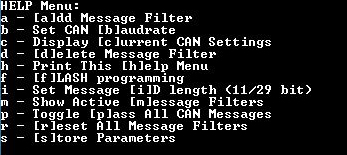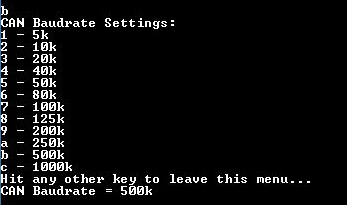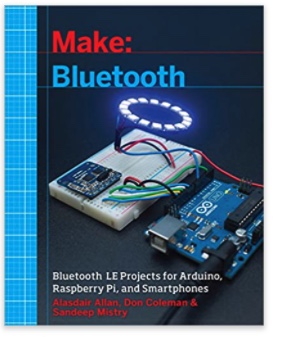Recent Posts
CAN Bus / OBD-II Bluetooth Scanner Ready For Release
Posted by on
 We have just finished the development of our jCOM.CAN.BTS product, a CAN Bus and OBD-II scanner device with Bluetooth connection (the image to the left shows the development setup). The device scans for user-defined CAN message frames and transmits them per Bluetooth to a PC or Android phone or tablet (A BLE - Bluetooth Low Energy - version is in planning to support communication with iOS devices as well).
We have just finished the development of our jCOM.CAN.BTS product, a CAN Bus and OBD-II scanner device with Bluetooth connection (the image to the left shows the development setup). The device scans for user-defined CAN message frames and transmits them per Bluetooth to a PC or Android phone or tablet (A BLE - Bluetooth Low Energy - version is in planning to support communication with iOS devices as well).
The hardware is based on a generic design that allows a multitude of applications with the support of optional electronic components and corresponding firmware.
The input power (7 VDC to 36 VDC to suit vehicle applications) and the CAN Bus / OBD-II connections are provided per DSUB-9 connector according to CiA recommendations. An additional RS232 port is used for setting up the scanner, e.g. CAN Bus baud rate, message ID length, and up to 100 message filters. A terminal program under Windows or Linux can be used for the setup as demonstrated in the following image:

As an example, the CAN Bus baud rate is set by hitting 'b' and then choosing the desired bitrate:

All parameters can be saved permanently onto the onboard SD card.
The CAN Bus message frame is translated into an ASCCI string for easy readability and processing. The following shows another terminal program connected to the Bluetooth COM port:

In this case, the screen shows a CAN Bus data frame with the address 0x5F8 with extended message ID length (29 bits), followed by eight data bytes.
Features
- ARM Cortex-M3 Processor
- CAN Bus Interface
- Fully certified low-power Bluetooth Version 2.1 Module (with or without external antenna)
- RS232 Interface For On-Site Firmware Upload and/or Setup Functionality
- SD Card Slot for Setup Data Storage
- Extended Temperature Range of -40C to +85C (-25C to +85C with SD Card)
- Input Power Range of 7 VDC to 36 VDC
- Flame Retardant ABS Enclosure 4.25 x 3.00 x 1.38 in / 107.95 x 76.20 x 35.05 mm
- Environmentally friendly, RoHS compliant
Specifications
- CAN Interface
- CAN Controller integrated in microcontroller
- Fully ISO 11898-compliant
- Supports CAN 2.0A And CAN 2.0B
- Bit rate up to 1 Mbit/s
- Bluetooth
- Fully certified Bluetooth version 2.1
- Backwards-compatible with Bluetooth version 2.0, 1.2, and 1.1
- Low power: 26 µA sleep, 3 mA connected, 30 mA transmit
- Bluetooth SIG certified
- Certifications: FCC, IC, CE
- Two antenna options available: PCB trace and external antenna
- Delivers up to 3 Mbps data rate for distances up to 20 meters (~60 feet)
- Optional upgrade to support distances up to 100 meters (~300 feet)
The official release is targeted for end of April 2018. For further information, please feel free to contact us.
Bluetooth Low Energy (Bluetooth LE, BLE, formerly marketed as Bluetooth Smart) is a wireless personal area network technology designed and marketed by the Bluetooth Special Interest Group (Bluetooth SIG) aimed at novel applications in the healthcare, fitness, beacons, security, and home entertainment industries. Compared to Classic Bluetooth, Bluetooth Low Energy is intended to provide considerably reduced power consumption and cost while maintaining a similar communication range.
Mobile operating systems including iOS, Android, Windows Phone and BlackBerry, as well as macOS, Linux, Windows 8 and Windows 10, natively support Bluetooth Low Energy. The Bluetooth SIG predicts that by 2018 more than 90 percent of Bluetooth-enabled smartphones will support Bluetooth Low Energy.
This book is where your adventures with Bluetooth LE begin. You will start your journey by getting familiar with your hardware options: Arduino, BLE modules, computers (including Raspberry Pi!), and mobile phones. From there, you will write code and wire circuits to connect off-the-shelf sensors, and even go all the way to writing your own Bluetooth Services. Along the way you will look at lightbulbs, locks, and Apple's iBeacon technology, as well as get an understanding of Bluetooth security--both how to beat other people's security, and how to make your hardware secure.
 Loading... Please wait...
Loading... Please wait...

